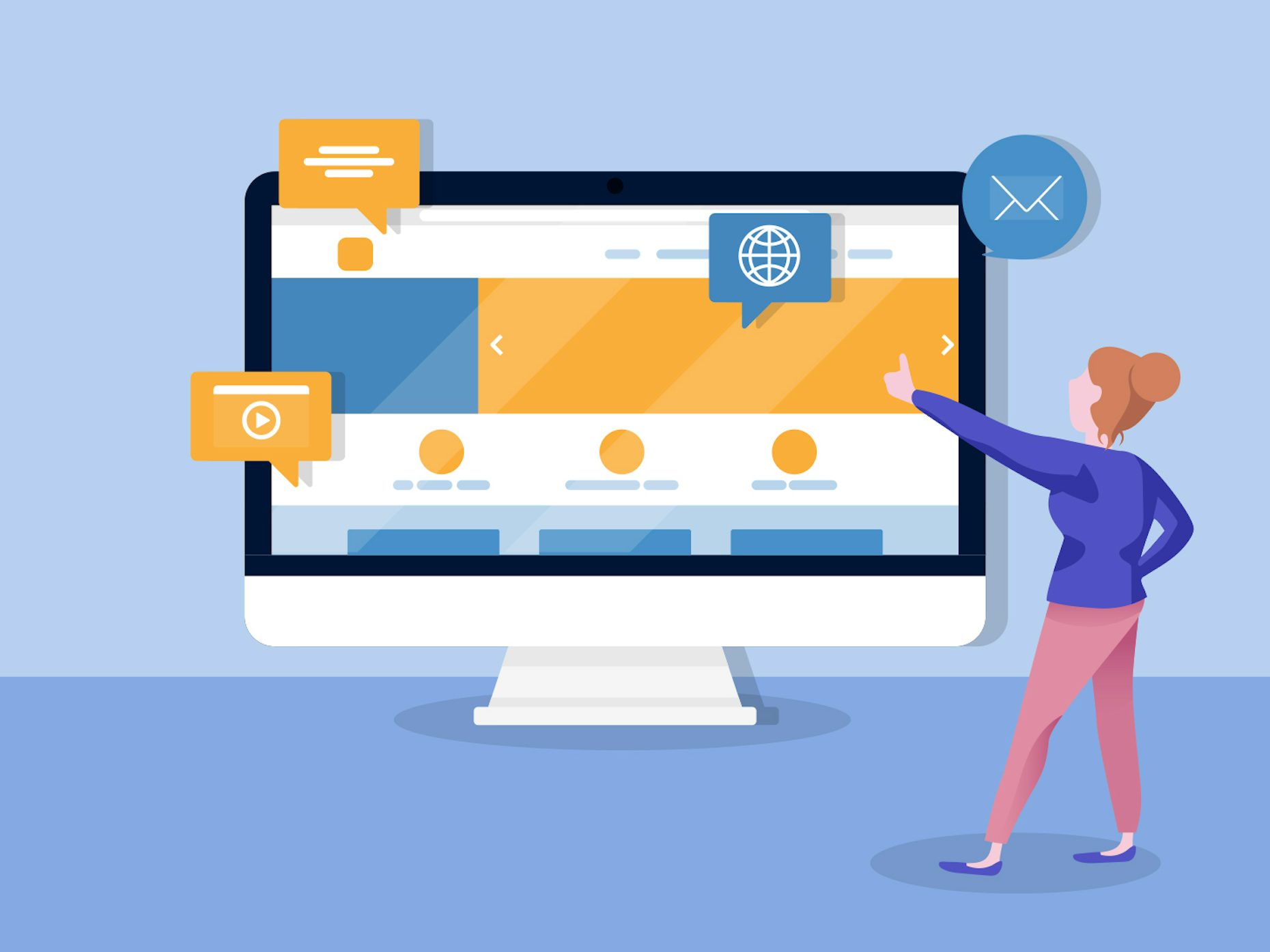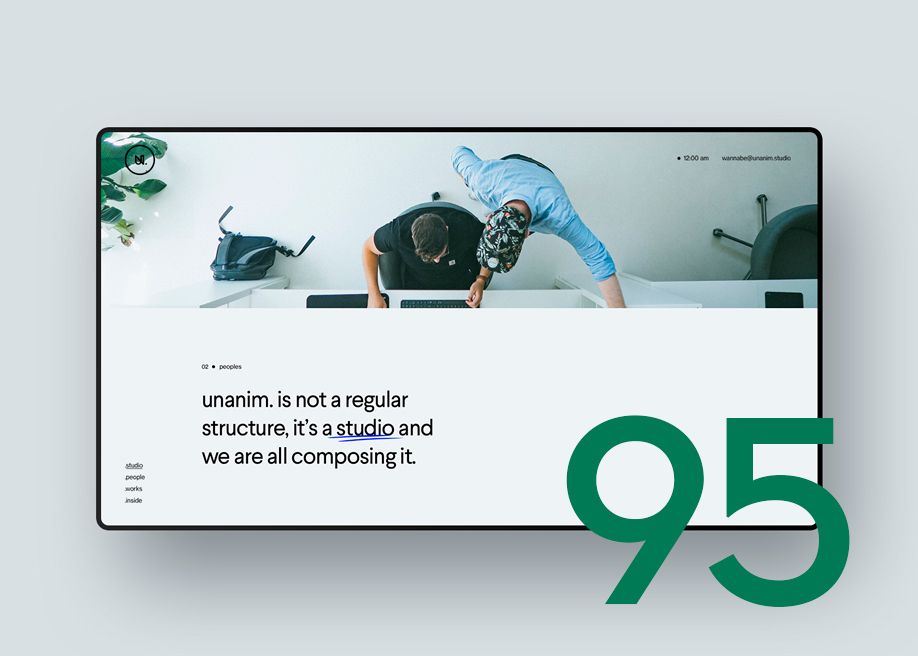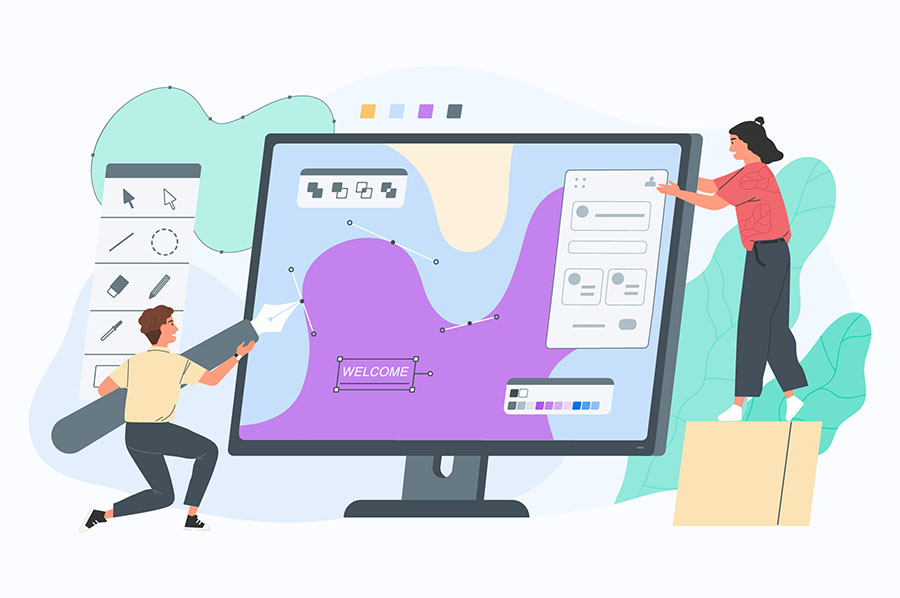All Categories
Featured
Table of Contents
- – Top Web Design Companies - Find Web Designers ...
- – Web Design Projects - Behance Tips and Tricks:
- – Penner Home - Durham Web Design - Penner Web ...
- – Web Design Ledger: Homepage Tips and Tricks:
- – Web Designer: Learn The 9 Skills You Need In ...
- – Web Design - Wikipedia Tips and Tricks:
- – Web Design Projects - Behance Tips and Tricks:
- – Web Design Tools & Software - Webflow Tips a...
- – Why Web Design Is Dead - - Ux Magazine Tips ...
- – Top Web Design Courses Online - Updated [Apr...
- – Google Web Designer - Home Tips and Tricks:
Top Web Design Companies - Find Web Designers Here Tips and Tricks:
Quick summary Usability and the utility, not the visual design, figure out the success or failure of a website. Given that the visitor of the page is the only person who clicks the mouse and for that reason chooses everything, user-centric design has actually developed as a basic approach for effective and profit-oriented web design - web design frederick md.
and the utility, not the visual style, determine the success or failure of a site. Considering that the visitor of the page is the only individual who clicks the mouse and therefore chooses whatever, user-centric design has actually ended up being a standard approach for effective and profit-oriented web style. If users can't use a feature, it might as well not exist.
g. where the search box should be placed) as it has actually already been done in a number of posts; rather we concentrate on the methods which, used effectively, can result in more sophisticated style decisions and streamline the process of viewing provided info. Please discover that you may be interested in the usability-related short articles we have actually published before: Concepts Of Great Website Style And Efficient Web Style Guidelines, In order to utilize the principles appropriately we initially need to comprehend how users interact with sites, how they think and what are the basic patterns of users' habits.
Web Design Projects - Behance Tips and Tricks:
Visitors look at each new page, scan a few of the text, and click the very first link that captures their interest or slightly resembles the thing they're searching for. There are big parts of the page they do not even look at. The majority of users browse for something intriguing (or helpful) and clickable; as quickly as some promising candidates are found, users click.
If a page supplies users with high-quality material, they are prepared to compromise the content with ads and the style of the site. This is the factor why not-that-well-designed sites with high-quality content gain a great deal of traffic over years. Content is more crucial than the style which supports it.

Extremely basic principle: If a site isn't able to meet users' expectations, then designer failed to get his task done appropriately and the company loses money. The higher is the cognitive load and the less intuitive is the navigation, the more ready are users to leave the site and search for options.
Penner Home - Durham Web Design - Penner Web Design ... Tips and Tricks:
Neither do they scan webpage in a direct style, going sequentially from one site section to another one. Rather users satisfice; they pick the very first reasonable option. As soon as they find a link that appears like it may result in the goal, there is an excellent chance that it will be instantly clicked.
It does not matter to us if we comprehend how things work, as long as we can utilize them. If your audience is going to act like you're designing signboard, then style excellent billboards." Users want to have the ability to manage their browser and rely on the constant data presentation throughout the site.
If the navigation and site architecture aren't intuitive, the number of enigma grows and makes it harder for users to comprehend how the system works and how to receive from point A to point B. A clear structure, moderate visual clues and easily recognizable links can help users to discover their course to their objective.
Web Design Ledger: Homepage Tips and Tricks:

Since users tend to explore websites according to the "F"-pattern, these three declarations would be the very first elements users will see on the page once it is loaded. The design itself is simple and instinctive, to understand what the page is about the user requires to search for the answer.
As soon as you've accomplished this, you can communicate why the system is beneficial and how users can gain from it. Individuals won't utilize your web website if they can't find their method around it. 2. Don't Waste Users' Persistence, In every project when you are going to use your visitors some service or tool, attempt to keep your user requirements minimal.
Novice visitors want to, not filling long web kinds for an account they may never ever use in the future. Let users explore the website and discover your services without forcing them into sharing private data. It's not sensible to require users to enter an e-mail address to test the function.
Web Designer: Learn The 9 Skills You Need In 2022 - Skillcrush Tips and Tricks:
Stikkit is an ideal example for an easy to use service which requires nearly absolutely nothing from the visitor which is unobtrusive and soothing. And that's what you want your users to feel on your website. Apparently, Mite requires more. However the registration can be carried out in less than 30 seconds as the kind has horizontal orientation, the user does not even need to scroll the page.
A user registration alone suffices of an impediment to user navigation to reduce inbound traffic. 3. Handle To Focus Users' Attention, As sites offer both fixed and dynamic material, some elements of the user interface bring in attention more than others do. Certainly, images are more captivating than the text simply as the sentences marked as bold are more attractive than plain text.
Focusing users' attention to specific areas of the site with a moderate use of visual elements can help your visitors to receive from point A to point B without thinking of how it actually is supposed to be done. The less enigma visitors have, the they have and the more trust they can establish towards the company the site represents.
Web Design - Wikipedia Tips and Tricks:
4. Aim For Feature Direct exposure, Modern website design are usually slammed due to their approach of assisting users with visually appealing 1-2-3-done-steps, large buttons with visual effects and so on. However from the design point of view these aspects in fact aren't a bad thing. On the contrary, such as they lead the visitors through the website content in a very easy and easy to use method.
The website has 9 primary navigation choices which show up at the very first look. The option of colors might be too light, though. is a fundamental principle of successful interface design. It does not really matter how this is attained. What matters is that the content is well-understood and visitors feel comfy with the method they interact with the system.
Instead a price: simply what visitors are looking for. An optimal service for efficient writing is touse short and concise phrases (come to the point as rapidly as possible), usage scannable design (classify the content, use numerous heading levels, utilize visual components and bulleted lists which break the flow of consistent text blocks), usage plain and unbiased language (a promo doesn't require to sound like ad; provide your users some reasonable and unbiased factor why they must utilize your service or remain on your site)6.
Web Design Projects - Behance Tips and Tricks:
Users are seldom on a website to delight in the style; moreover, in many cases they are searching for the details regardless of the style - web design frederick md. Pursue simplicity rather of intricacy. From the visitors' viewpoint, the very best site style is a pure text, without any ads or more content blocks matching precisely the query visitors utilized or the material they have actually been trying to find.
Finch plainly provides the details about the site and gives visitors an option of options without overcrowding them with unnecessary material. 7. Do not Hesitate Of The White Space, Really it's actually tough to overestimate the value of white area. Not only does it help to for the visitors, however it makes it possible to perceive the details presented on the screen.
Complex structures are harder to check out, scan, evaluate and work with. If you have the option between separating two design segments by a noticeable line or by some whitespace, it's generally much better to use the whitespace service. (Simon's Law): the much better you manage to supply users with a sense of visual hierarchy, the simpler your content will be to perceive.
Web Design Tools & Software - Webflow Tips and Tricks:
The very same conventions and guidelines should be used to all elements.: do the most with the least quantity of cues and visual aspects. Four significant points to be considered: simpleness, clearness, diversity, and emphasis. Simpleness includes just the aspects that are most essential for communication. Clearness: all elements should be designed so their significance is not uncertain.
Conventions Are Our Pals, Conventional design of site components doesn't lead to a boring web website. As they decrease the discovering curve, the requirement to figure out how things work. For example, it would be an usability problem if all sites had various visual presentation of RSS-feeds. That's not that different from our regular life where we tend to get used to standard concepts of how we arrange information (folders) or do shopping (placement of products).
comprehend what they're anticipating from a site navigation, text structure, search positioning etc. A normal example from use sessions is to translate the page in Japanese (assuming your web users don't understand Japanese, e. g. with Babelfish) and offer your usability testers with a job to discover something in the page of different language.
Why Web Design Is Dead - - Ux Magazine Tips and Tricks:
Steve Krug suggests that it's much better to, but benefit from conventions when you do not. 10. Test Early, Test Frequently, This so-called TETO-principle needs to be used to every website design project as use tests frequently supply into substantial problems and issues associated with a given design. Test not far too late, not too little and not for the incorrect reasons.
Some crucial indicate keep in mind: according to Steve Krug, and screening one user early in the task is better than testing 50 near completion. Accoring to Boehm's very first law, errors are most regular throughout requirements and design activities and are the more costly the later they are removed.
That means that you develop something, test it, fix it and then check it again. There might be issues which have not been discovered throughout the first round as users were virtually obstructed by other issues.
Top Web Design Courses Online - Updated [April 2022] - Udemy Tips and Tricks:

This holds for designers also. After you've dealt with a website for couple of weeks, you can't observe it from a fresh point of view any longer. You know how it is built and for that reason you know precisely how it works you have the knowledge independent testers and visitors of your site would not have.
It can be connected to other areas such as graphic design, user experience, and multimedia arts, but is more aptly seen from a technological standpoint. It has ended up being a big part of people's everyday lives. It is tough to think of the Internet without animated graphics, various styles of typography, background, videos and music.
During 1991 to 1993 the World Wide Web was born. Text-only pages could be seen using a basic line-mode internet browser. There had been no integrated technique to graphic style components such as images or noises.
Google Web Designer - Home Tips and Tricks:
The W3C was created in October 1994 to "lead the Web to its complete potential by developing common procedures that promote its development and ensure its interoperability." This prevented any one business from monopolizing a propriety browser and programs language, which might have changed the impact of the Internet as a whole.
As this has taken place the innovation of the web has also moved on. There have actually also been significant changes in the method people use and access the web, and this has actually changed how websites are developed. Given that the end of the browsers wars [] brand-new browsers have been released. A lot of these are open source suggesting that they tend to have quicker advancement and are more supportive of brand-new requirements.
Learn more about Lovell Media Group LLC or TrainACETable of Contents
- – Top Web Design Companies - Find Web Designers ...
- – Web Design Projects - Behance Tips and Tricks:
- – Penner Home - Durham Web Design - Penner Web ...
- – Web Design Ledger: Homepage Tips and Tricks:
- – Web Designer: Learn The 9 Skills You Need In ...
- – Web Design - Wikipedia Tips and Tricks:
- – Web Design Projects - Behance Tips and Tricks:
- – Web Design Tools & Software - Webflow Tips a...
- – Why Web Design Is Dead - - Ux Magazine Tips ...
- – Top Web Design Courses Online - Updated [Apr...
- – Google Web Designer - Home Tips and Tricks:
Latest Posts
Pueblo Web Design Tips and Tricks:
10 Principles Of Good Web Design - Smashing Magazine Tips and Tricks:
Web Design Software By Xara Tips and Tricks:
More
Latest Posts
Pueblo Web Design Tips and Tricks:
10 Principles Of Good Web Design - Smashing Magazine Tips and Tricks:
Web Design Software By Xara Tips and Tricks: